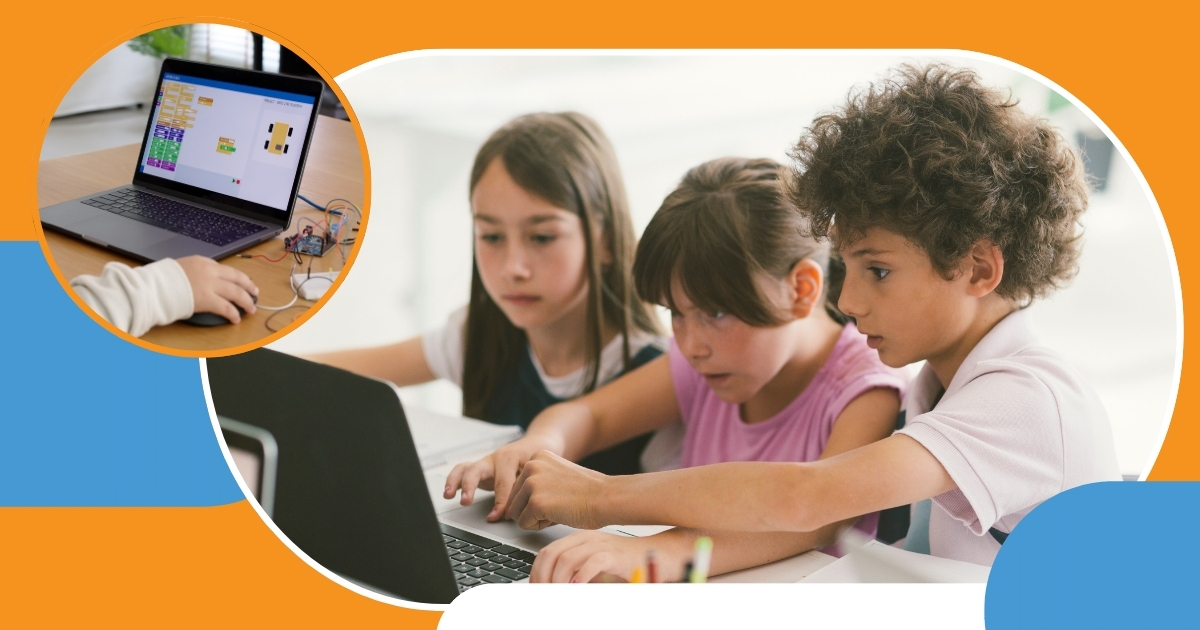Homeschooling empowers parents to provide education tailored specifically to their children’s needs. For many families, incorporating technology into homeschooling can add flexibility, engagement, and efficiency to the learning process. Educational technology for homeschool opens up countless opportunities through tools, apps, and online resources that enhance learning and streamline daily teaching tasks.
This guide will help you understand how to use technology in a way that works best for your homeschool setup. From tech tools to online curriculums, you’ll find practical strategies and actionable tips to maximize the benefits of educational technology.
Why Technology Matters In Homeschooling
Technology gives homeschooling a significant boost, offering tools and resources that make learning more accessible, interactive, and personalized. Here’s why educational technology is so impactful for homeschool settings:
- Personalized Learning: You can tailor resources and lessons to suit your child’s learning style, pace, and interests.
- Access to Knowledge: Tech connects students to expert materials, guest lectures, and niche topics that might otherwise be out of reach.
- Interactive Content: Videos, games, simulations, and virtual experiments make learning fun and memorable.
- Efficient Teaching: Tools like planners and learning management systems simplify scheduling, progress tracking, and lesson preparation.
- Cost Savings: Many educational resources and apps are free or come at an affordable price, reducing the need for pricey physical materials.
Whether your child thrives on hands-on projects or prefers visual learning, technology adapts to their unique needs, making homeschooling even more effective.
Must-Have Tech Tools For Homeschooling
Not all tech tools will work for every family. To avoid overwhelm, it’s best to focus on resources that seamlessly fit into your daily homeschool routine and meet your learning objectives. Below are popular tech categories and tools to consider.
- Learning Management Systems (LMS)
A Learning Management System acts as the backbone of digital organization for your homeschool. LMS platforms allow you to assign tasks, track progress, and store lesson plans all in one place. Here are a few top LMS options:
- Google Classroom: Free, simple, and user-friendly, Google Classroom lets you create assignments, track submissions, and communicate with students easily.
- Seesaw: Ideal for younger kids, Seesaw encourages creativity as children create, share, and reflect on digital assignments.
- Canvas: A highly customizable LMS that works well for families homeschooling children of different ages or grades.
Apps make learning convenient and engaging, often presenting challenging topics in a playful format. Here’s a breakdown of subject-specific apps to explore:
- Math
- Prodigy Math Game is an adventure-based game to practice math skills.
- Khan Academy Kids provides lessons for preschoolers to elementary-age students.
- Mathway helps solve equations and explains steps for better comprehension.
- Science
- Toca Lab offers a fun introduction to chemistry and elements.
- Labster lets students conduct virtual biology, chemistry, or physics experiments.
- Language Arts
- Epic! provides access to thousands of digital books across reading levels.
- Grammarly assists with spelling, grammar, and sentence structure in writing exercises.
- Duolingo makes learning foreign languages interactive and gamified.
- Technology and Coding
- Scratch is an excellent starting point for kids to design animations through coding.
- Code.org offers beginner-friendly lessons to learn the basics of computer science.
- Video Conferencing Platforms
Face-to-face interaction is still valuable, even in a homeschool setting. With video conferencing tools, your child can join live online classes, work with tutors, or participate in group lessons. Some widely used platforms include:
- Zoom
- Microsoft Teams
- Skype
Many educational programs also include video conferencing in their package, making it simple to integrate into your homeschooling schedule.
- Digital Planners
Effective planning is critical in homeschool environments, and digital planners can help you stay organized. These platforms keep schedules, appointments, lesson plans, and activities in one convenient place. A few examples to try include:
- Trello (visual task organization through boards and cards)
- Homeschool Panda (designed specifically for homeschool families)
- Google Calendar (an intuitive, no-cost scheduling tool)
- Assistive Technology for Learners
If your child has unique learning needs, assistive technology can help remove barriers to education. Some examples are speech-to-text tools (such as Dragon NaturallySpeaking) that help with writing or screen readers for visually impaired students. Devices like noise-canceling headphones or specialized keyboards can also provide extra support, empowering children to focus and thrive in their learning environment.

Online Resources For Homeschoolers
The internet offers an expansive library of resources customized for homeschooling. From complete curriculums to creative ideas, here are some online tools to explore.
Comprehensive Online Curriculums
Full online curriculums save you time by covering key subjects in one organized platform. These programs often offer a mix of videos, worksheets, and quizzes. Great options for homeschoolers include:
- Time4Learning provides materials for preschool through 12th grade, offering flexibility to learn at your child’s pace.
- Khan Academy is a free platform trusted by millions for its comprehensive lessons in science, math, history, and more.
- CK-12 Foundation offers customizable resources, including simulations and adaptable lessons for various learning styles.
Virtual Field Trips
Give your child the world without leaving home. Virtual field trips are fantastic ways to explore museums, landmarks, and environments beyond your local area. Consider these engaging experiences:
- The Smithsonian Museum’s virtual exhibits showcase history, art, and science.
- Google Arts & Culture allows users to explore famous artwork and cultural artifacts.
- NASA Virtual Tours offer an exciting glimpse into space exploration facilities.
Digital Libraries and Audiobook Platforms
You don’t need to head to the local library to find books! With apps and websites, you can instantly access eBooks and audiobooks for all age groups. Check out:
- Epic! (a kid-focused collection of digital books)
- OverDrive (connects to local libraries for borrowing eBooks)
These resources are excellent for developing a love of reading or giving reluctant readers an alternate format to explore stories.
Pre-Made Lesson Plans
Skip the stress of creating lessons from scratch by downloading pre-made ones. Trusted platforms like Education.com, Teachers Pay Teachers, and Twinkl offer lesson plans and activities, many of which are customized for homeschooling families.
Encouraging Creative and Independent Learning
Technology should be more than just a tool for feeding information. It’s also a channel for inspiring creativity and independence in your child’s education. Online programs like Khan Academy provide self-paced, mastery-based learning, allowing kids to take charge of their progress in various subjects.
For creative projects, platforms like Canva and Adobe Spark give students the tools to design presentations, posters, and even newsletters. By giving your child creative freedom, you foster a sense of ownership and responsibility in their learning. You also prepare them for the independence needed later in life.
Managing Screen Time
Technology is incredibly useful, but it also comes with a downside if overused. To create a healthy balance, it’s essential to set limits on daily screen use. Plan intentional “tech-free” periods built into your school day for activities like:
- Outdoor play and physical exercise
- Hands-on science experiments and crafts
- Reading physical books or journaling
You can also enable time restrictions within educational apps or devices to ensure your child isn’t spending unmonitored hours in front of the screen. Finding a balance between online and offline activities helps kids stay focused and energized.
Tapping into Digital Homeschool Communities
Homeschooling doesn’t have to be a solitary experience. Technology provides plenty of ways to connect with other homeschooling families, share resources, and even arrange virtual group activities. Consider joining platforms like:
- Facebook Homeschool Groups where parents exchange tips, sell materials, and share advice.
- Reddit Communities where families can ask questions and connect with others navigating similar challenges.
Many online learning platforms also offer class-based communities for kids, such as Outschool, which facilitates group discussions, collaborations, and social interaction with peers around the globe.
Keeping It Simple
It’s easy to get excited about all the bells and whistles technology has to offer, but overloading with gadgets and apps can complicate your homeschool routine. Start with one or two essential tools that support your primary goals, such as a digital planner or a subject-specific app. Once you and your child feel comfortable, slowly introduce additional resources.
Educational technology in homeschooling works best when it complements—not overwhelms—your teaching approach. Keeping it simple allows you to stay focused, reduce distractions, and create a more impactful learning experience for your child. By strategically integrating tech tools and online resources, you can expand your homeschool with endless opportunities.





